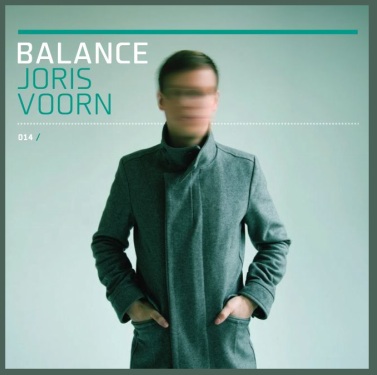After what seemed like a fairly continuous stream of “lows” spread across a period of nearly four years, in December 2011 I met a woman who I was genuinely interested in and attracted to. At initial meeting, she had everything that I was looking for and I was extremely happy.
The beginning of the relationship started as most relationships do, but there were aspects that I (internally) questioned. The first aspect was the fact that she established plans for us well into the future. Needless to say, this was extremely flattering in that it showed 1) she wanted to spend time with me, 2) she was interested in doing fun things and 3) she was optimistic about our future. As I would eventually see, the downside of this planning activity was the exclusion of things / places that *I* wanted us to experience. Those ideas were simply not on her agenda.
Another boundary she set early on was communication. While we saw each other on a fairly routine basis, our communication outside of these dates was limited primarily to texting (no phone calls). Since I had unfortunately equated “conflict” with phone communication (i.e. phone conversations that involve someone with borderline personality disorder are typically conflict-ridden), I initially did not have any issue with this lack of communication. Over time I believed she would open up and texting would be replaced by “normal” communication channels (i.e. the telephone).
Unfortunately, I was wrong. Communication hit a peak early in the relationship and then slowly tapered off until there was no communication at all. By the time I figured out what was happening, the music had stopped and I was without a place to sit.
Early in the relationship I was told by close friends that my girlfriend had a “wall” and that I needed to be patient. What was confusing was the speed by which she emotionally opened up. Within weeks she was talking about eventually moving in together and spoke often about how she liked taking care of me and how we were progressing to the “next stage of our relationship.” She even commented on how she liked “boyfriend” and “girlfriend” labels. All of this was extremely flattering and encouraging.
If there was a “wall,” I was only seeing glimpses of it. I believed that her wall was slowly (quickly?) coming down.
Unfortunately, these “glimpses” became increasingly prevalent as time went on. We would start getting close to one another, but once the weekend was over, the method of communication flipped 180 degrees from interpersonal to electronic. It was this very shift that prompted me to establish initial psychological & emotional boundaries. This “push-pull” behavior (I’m feeling comfortable with you … now I’m not …) indirectly created distrust in the relationship. What I didn’t realize was the strength of the undercurrent that had started to form; the relationship was becoming based upon activities vs. true communication and connection.
This lack of connection was also present when we spent time together. For example, when walking side by side, her arm would be next to mine but rarely around me. When we spent time with her friends, I frequently felt like a third wheel; just another “body” to be around but nothing more. On dates, we were in the same general location, but not close enough to converse about what we were experiencing. To be sure, this distance ebbed and flowed throughout the relationship, until the “tide” decided to remain far from shore.
The most puzzling aspect of her behavior was the fact that she would never “look back” when we (temporarily) departed from one another (I would always look back because I wanted to see her again before I left). Clearly something wasn’t right, but I continuously attributed this to her “wall.” If I was patient enough, the wall would eventually collapse and our relationship would begin. In this case however, the wall was only getting stronger.
Towards the end of the relationship, her behavior and general attitude towards me became increasingly ambivalent and negative. While extensive disagreement / conflict would normally be the cause of such behavior, there wasn’t anything specific to which I could trace her hostility and coldness. I was puzzled.
At this stage, my self-esteem was rapidly eroding. I felt isolated and alone, and any semblance of positive change was nowhere to be seen. I was losing my friend and she was seemingly unaware of the damage she was inflicting.
At the end of the relationship I was told that I “needed more friends and confidence,” and that perhaps I should see a “life coach” to deal with my feelings (?). While there were some truths in her comments (after all, this relationship was taking a serious toll on my self-confidence given her behavior), they were clearly projections of what she believed about herself. Unfortunately I was the closest target.
Confidence and friend issues aside, the ending of this relationship was extremely painful, not just because of the loss of a “friend” and companion, but of a relationship that “could have been” (fill in the blank: great, wonderful, fulfilling).
To have hopes that you’ve found a true partner only to have those same dreams dashed was (and is) very hard to process, particularly when you’ve fallen for the wrong person (which coincidentally resulted in extreme feelings of shame).
The kind and gentle woman who I met in December eventually turned into a complete stranger. In the end, I realized that our relationship wasn’t about us, it was about her.
Appendix: Warning Signs
- Family background
- Fast-forwarding
- Excessive boundaries
- Disrespectful behavior towards waitstaff / friends
- “Fiercely independent”
- Always need to be in control
- Push-pull behavior
Appendix: Statistics
- Relationship Duration: 4-5 months
- Grief Cycle Duration: 4 months
- Primary Feelings: Shame / Embarrassment / Isolation
- Books Read (narcissism, relationships, boundaries): 5
- No Contact Policy: Permanent
